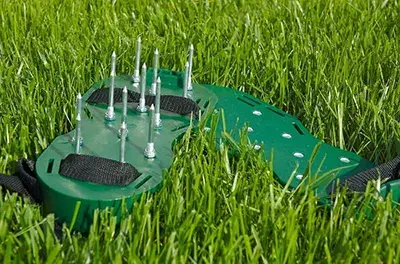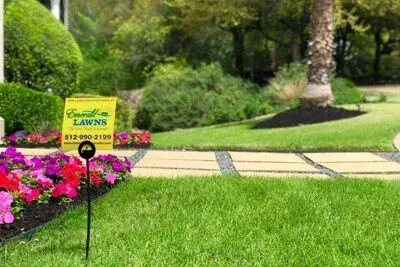
Grasses have the ability to go dormant for different lengths of time depending on specifies, age, shade, maintenance (low mowing, too much nitrogen fertilizer in spring, not enough in fall), traffic, and heat. Dormancy is a state of reduced water usage where the plant focuses resources on the roots. The grass will turn brown and is often considered unappealing to the eye. The change in seasons from summer to fall presents an optimal time for the renovation and establishment of cool-season turfgrasses and a period of preparation for warm-season grasses before their winter dormancy. Understanding why renovation and lawn prep for the winter season is necessary to help you avoid the same pitfalls in the future.
Water
Most turfgrass plants can stay in a dormant state for at least 3-4 weeks without the grass dying and even longer if the dormancy is induced by cold. If the cold goes beyond the 4-week mark it is suggested that water be applied to re-hydrate the grass slightly and keep it alive. Turfgrasses that are trafficked during drought conditions must be irrigated regularly to maintenance performance and prevent widespread turf damage. Lawn areas established in spring or previous fall should be irrigated because they have not developed extensive root systems.
Weed control
Weed control needs vary depending on the time you seed turfgrass. Some weeds thrive under these reduced water situations because of large taproots that can hold water. It is best to spot treat these areas with weed killer or pull the weeds by hand. Avoid a broadcast application of herbicide on your lawn, which can further stress the dormant turf. Herbicides are ineffective on cold-stressed weeds and cab be damaging on the cold-stressed lawns.
Fertilizer
The fall presents growing conditions conducive for improving turf density through the development of new shoots and stems, increase carbohydrate storage, and enhance root production. You can make supplemental nitrogen applications later in the fall after establishment if you want a boost in growth or color. During a dormant phase caused by cold or drought grass should not be excessively fertilized. The dormant turf is not bringing in large quantities of nutrients and can thus cause injury to the grass.
With recent drought conditions and hot temperatures in Austin, Texas, landscape plants have become water-stressed. Instead of a lush green color, many lawns have already gone dormant, turning a greenish-yellow to straw-brown. Come spring, strive to improve the overall health of your lawn. Consider overseeding with new improved cultivars, aerate to stimulate root growth, and fertilize to improve the thickness of the turf. Strong, healthier lawns survive periods of dormancy better. Feel free to reach out to our experts at Emerald Lawns Austin if you have any questions. Call our lawn care company at (512) 990-2199, or contact us online for information.




